#chimelong spaceship
Explore tagged Tumblr posts
Note
I’ve seen this video circulating recently and was wondering if you had any idea what’s going on and why the orca is doing this. I don’t know much about cetaceans
Hello! Thanks for the ask.
So this gentleman is Nakhod, one of the adult male orcas at Chimelong Spaceship (which is in China, so it would not be even remotely affected by the SWIMS Act promoted in the video’s caption). Let’s preface by saying that since I don’t actually know this animal or the specifics of his care, I can’t come to any hard and fast conclusions from watching a 20 second video.
The Instagram page you linked is using this clip as proof of “mental health issues.” First off, animals can’t be diagnosed with mental health disorders as we understand them, but I think it’s safe to say they’re referring to stereotypies.
This could absolutely be a stereotypy, and I definitely don’t want to diminish that possibility. However, but its very nature, a stereotypy must be repeated. In this 20-second clip, we only see Nakhod smack his head once before swimming off, so this particular incident doesn’t seem overly stereotypical. Personally, I think it’s more likely he’s displaying misdirected aggressive behavior, particularly since he opens his mouth afterward. As for what’s causing him to be so frustrated, it could be he’s annoyed at the guests. But the fact that he very clearly smacks his genital slit against the acrylic really makes me think it may be sexual.
Chimelong is actively breeding its orcas (Nakhod himself has already sired a calf), so we know their whales are not on birth control (at least not all the time). It’s certainly within the realm of possibility that there was a female in estrus that he was either separated from or rebuffed by. From personal experience, male cetaceans tend to get a little crazy when the females are receptive, and that includes aggressive displays. If I had to go with my gut, I think this is sexual behavior. But again, that’s pure speculation on my part.
So, in conclusion, I don’t know for sure what’s going on. He could be developing a stereotypy, or he could be frustrated, sexually or not. It’s not a benign behavior, but it’s also not automatic evidence of extreme distress.
Note: Normal orca vocals sound sad and pathetic. They’re not screaming or wailing, that’s just how they are. Not sure if the video said “sound on” to hear that or the thuds from him banging the acrylic.
Another note: My overall feelings on Chimelong are really complicated. They purchased their whales from wild captures 8-10 years ago, but their current facility is by far the largest and certainly the most enriching orca habitat ever built. They’ve also had a lot of success breeding healthy calves, which indicates they’re at least doing something right. At the same time, the park is outer space themed for some reason, and since I can’t read or speak Mandarin, I have no idea what the educational value of the aquarium section is. But I hope the Chimelong pod does for China what Shamu did for the United States—inspire a passion for orcas.
#orcas#killer whales#cetaceans#marine mammals#animal behavior#animal welfare#chimelong spaceship#answered asks#specimentality
40 notes
·
View notes
Text

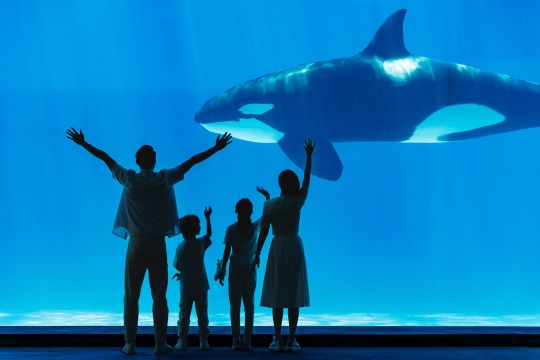
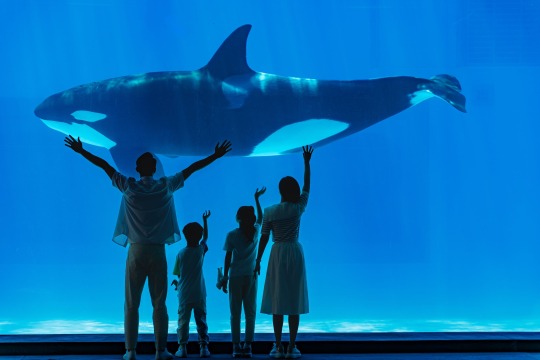


More images of the Chimelong pod, from here: https://www.themeparx.com/chimelong-spaceship/
#chimelong ocean kingdom#chinese orcas#russian orcas#russian killer whales#killer whales#orcas#chimelong spaceship
23 notes
·
View notes
Text


Chimelong Spaceship Theme Park in Zhuhai, China
World’s Largest Indoor Theme Park
11 notes
·
View notes
Text
Recently I went to Chimelong Spaceship Hotel and HOLY CRAP THE AMUSEMENT PARK (yes an amusement park IN THE HOTEL) IS AMAZING
So I'm doing art
Yea
HAVE SOME ORCA ART BECAUSE THE ORCA SHOW WAS AMAZING YOU GUYS PLEASE GO TO CHIMELONG IF YOU HAVE TIME PLEASE PLEASE PLEASE

(also shading practice, it's kinda fun playing with the lighting and shading strokes)
#Chimelong Spaceship Hotel#Chimelong#Artists on Tumblr#Art#orcas :)#Silver's hyperfixations be switching from one to another
5 notes
·
View notes
Text
The record breaking waves at Chimelong Spaceship’s main tank are turned on randomly throughout the day, not only during shows. The whales enjoy the waves very much, and the trainers let them express themselves in the waves (surfing, fast swimming, sliding, etc.). So far, the whales have not been trained to do any particular behaviors with the waves, mostly with regard to the safety of the whales and staff.
104 notes
·
View notes
Text
The Path Forward is Fuzzy, but still, I see it
I had originally written this to Sonar plus a bit from a talk with a friend but I am feeling really positive and hopeful lately and I wanted to share because I do right now really have hope that we will return to the water, that things will be okay.
I will still CW this as Unreality and Delusion because that is what the humans think, even if it is something that does bring me a lot of joy.
When I look at what must be done, especially if we were to live in captivity, the problems to solve really do not seem very insurmountable at all. Most of the suit would be essentially silicone casts of various hardness and conductivity. The thermal loading isn't actually an issue for us and a package for use to see our environment could be as simple as some cameras and screens (though having directional hearing I think would be nice as well as something which could create a delay in sound for Sonar allowing a sort of echolocation). In the simplest form I think the greatest complication is how to make a blowhole that opens and closes passively, particularly for a odontecete style blowhole (toothed whales) since mystecete blowholes have a lot more available movement for making more effective seals. But even that I have ideas on how to do. There are ideas which would introduce greater complexity which I would very much like to be able to at some point and I think are doable so we could do things like catch food, especially things a trainer might throw to us like deboned fishy or gelatine. Even in the most complex of situations, if I could come up with an effective way to remove solid waste there are only a few aspects that seem particularly difficult and we could potentially exist without needing to come out to change things for near two months.
We also aren't the first to do something like this. There are various stories of people using prosthetics or costume to transform their bodies. They may not be like us in the same way, or not openly so, but others have made themselves much more as animals at least for a short bit like the story of the man who became a goat. And techniques among furries I think can allow us to make a really rather convincing whale and dolphin, fix our bodies as much as we can without whatever technology the humans used to render us like this.
I think even finding a place to go might not be so difficult even. There are so many places that have held cetaceans, and many seem to be phasing out various orca exhibits. What may have been a very small pool for a 6-7 meter orca might not be so small to a 3 meter minke that will never get bigger than a calf and hopefully their dolphin friend and maybe some place would find that appealing. Even beyond zoos and aquariums and marine parks, I think there are a lot of places that might be willing to take us just for the novelty of us. There are Orca that live in an amusement park in Chimelong Spaceship (and Sea World and a few others are essentially amusement parks themselves at this point). I think other places be it amusement/theme parks, or a resort, or some other form of attraction might like to have the strange little cetaceans we are and there are so many across the world. I imagine in those cases we would have to perform for the humans and they might have something with them touching or swimming with us, but at least we would do so as ourselves and the humans would give us fish and it would help break up some of the monotonous boredom of most days. Humans might even be interested in it for scientific reasons, could we reintegrate with other cetaceans, could we learn more, could we be used to learn about wild cetaceans we struggle to map. Or possibly the humans might let us for artistic reasons or even some argument about the ethics of captivity since we could speak more to the experience though I don't think that would make an actually useful experiment and I imagine in that last case they might not let us stay in the water forever, but it might at least be a way to get us into the water in the first place.
The path forward is fuzzy still, I cannot see my way fully through the murk, but when I spyhop above the waters I can see so many paths forward, so many possibilities that will grant us our freedom. I do not think the waters are unnavigable, they are a bit unknown, but our kind have been navigating changing waters for 50 million years, we are good navigators, and clever animals. I do really think that someday we will finally return to the water, escape this wretched nightmare, that we will swim free, and we will swim forever.
Those first nights sleeping in the water once the suits are made will no doubt be terrifying, and in truth living like that I very much doubt I would live to my natural lifespan of 55-60 years, cetaceans who haven't had done to them what we have do not live to their natural life in captivity and any number of things could probably fairly quickly end us. Still 25+ years if I could have that in a tank would give me an incredible joy. My memory span is somewhere between 12 and 18 months, and only longer if something specifically reminds me and even then it is often spotty. I know the place I am from, but I have no memory of it, it is a name and little more. I know I have only been here a few years, and yet this is the only home I know. After a year and a half I would remember almost nothing of human life, I would be a whale again, simple as that. I might remember I was once human, and I might still understand that the humans changed me and that is why I need to come out and the humans do things to me periodically. And since I would not have constant reminders of human life, much of that memory might fade in a month or two as I return to whale life. If I were in a tank 25 years, I would go through that cycle 16 times over, I would just be a whale, the nightmare of the human life maybe would have all but disappeared from me when I return to the current. Even in a shorter time, even after a few cycles I would remember nothing, gone into the murk behind me. Likely I would have a sense of boredom and lonliness and plenty of other captive cetaceans problems, but no longer would I remember or feel the horror of what was done to me, I would be free (which is an ironic thing to say for an animal that would be held in a relatively small pool and unable to leave but it is a different type of free). Even after just a few cycles I would be free, and I hope that we would swim together forever until it is time to return to the current.
~Kala
#therian#therianthropy#clinical zoanthropy#clinical lycanthropy#transspecies#species transition#whale suit
11 notes
·
View notes
Text
youtube
Officially released footage of the birth of Yilong, the first killer whale born in human care in China. The calf, born in 2019, is the first of three successful killer whale births at Chimelong Spaceship’s new oceanarium, which opens to the public this month.
#look I am VERY begrudgingly more and more impressed with this place#and honestly it should embarrass western parks#their facilities are better than anything we have#and breeding orcas is not easy to do#clearly things are being done right#chimelong ocean kingdom#chimelong spaceship#orcas#killer whales#cetaceans#marine mammals#Youtube
27 notes
·
View notes
Text
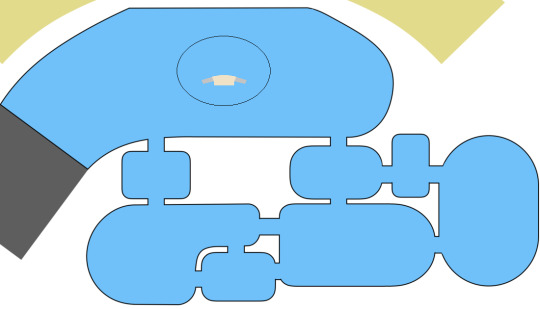
I made an approximation of Lolita's whale bowl compared to the Chimelong Spaceship complex.
Going by this main pool being 102 meters across, and Lolita's pool being 80 x 60 feet (according to @the-whale-pool). The work island was just approximated, I have no measurements.
8 notes
·
View notes
Text
Public trial operations of Chimelong Spaceship begin September 16, 2023.
https://mp.weixin.qq.com/s/waPzQTz1OnHFSdkgMcKp7w
138 notes
·
View notes
Text
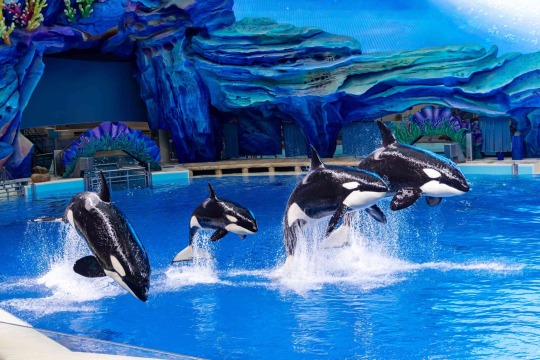

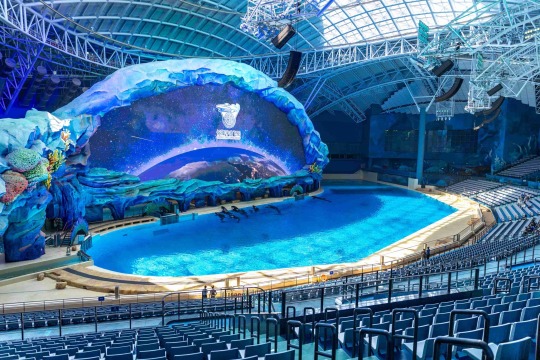

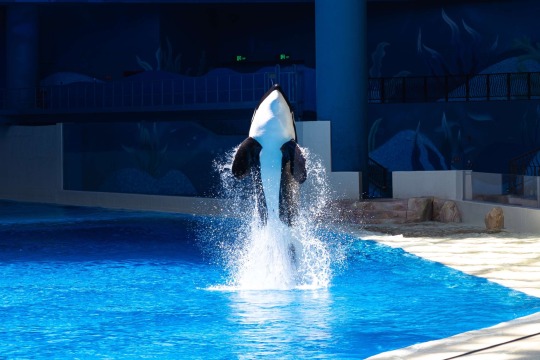
Ahead of Chimelong Spaceship's grand opening, Chimelong has officially released new photos and details about their killer whales (paraphrased):
Over the past ten years, Chimelong has carried out scientific research of and successfully cared for 12 killer whales.
The three killer whales born at Chimelong are Yilong 一隆 (the first killer whale to be born at a Chinese aquarium), Loki 洛基 (the first killer whale calf to be hand-raised at a Chinese aquarium), and Katniss 凯特��斯 (the first "second child" killer whale calf to be born at a Chinese aquarium).
Chimelong is emphasizing their dedication to conservation and research, and they are touting the revolutionary size and design of their killer whale exhibit.
64 notes
·
View notes
Text
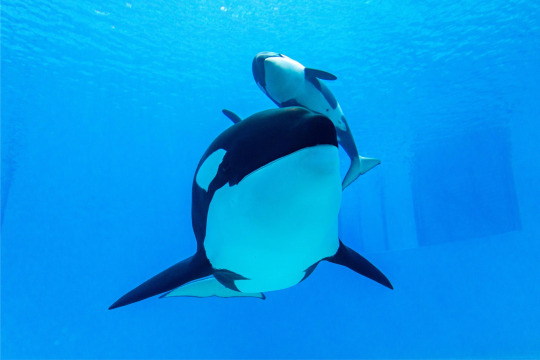
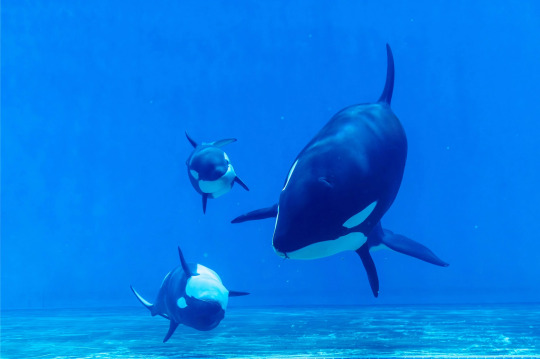
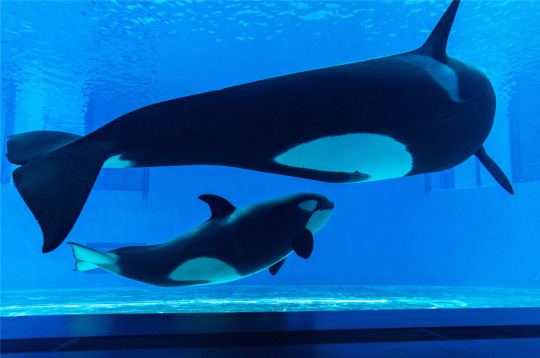

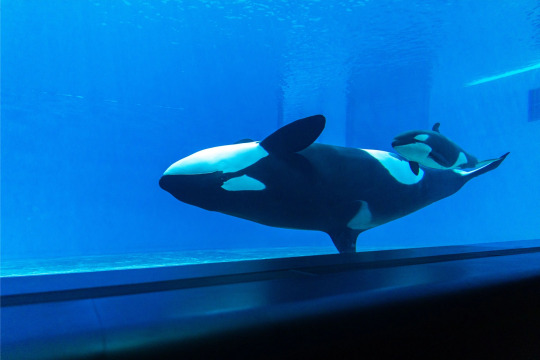
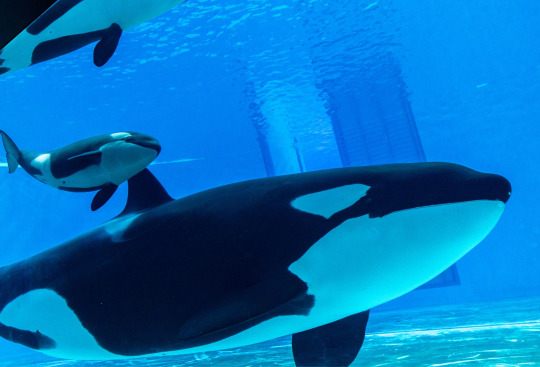



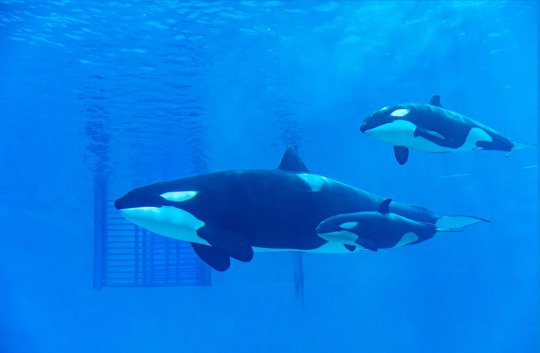
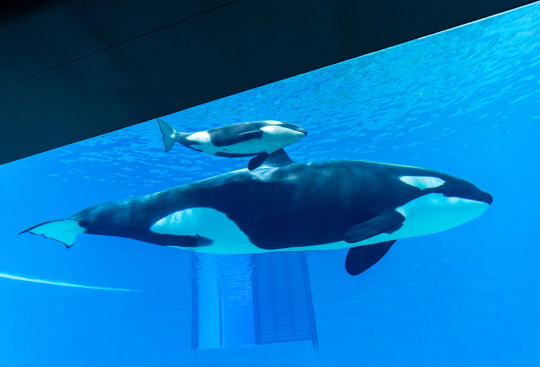





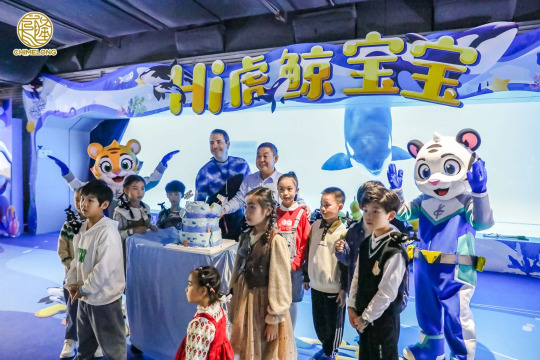

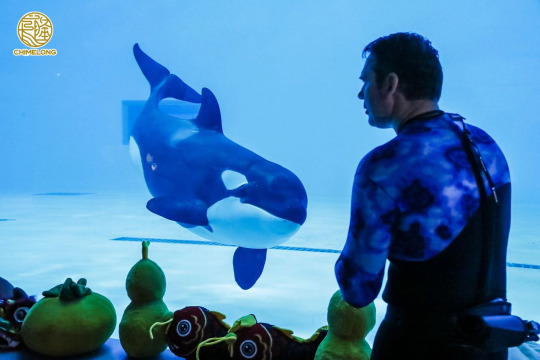
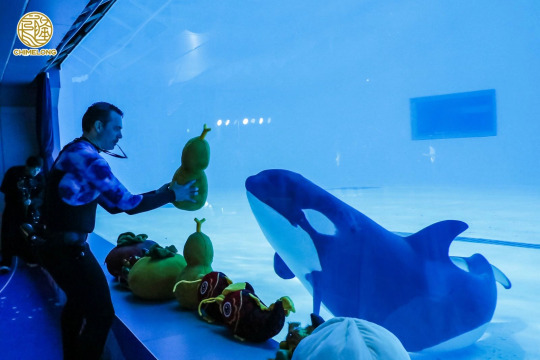


Earlier today Chimelong Spaceship for the first time uncovered the underwater viewing window looking into Pool C, one of the orca exhibit’s back pools, for the public debut of Katenka and her calf, together with Katniss and Loki. However, a curtain has been installed in front of that window, so it can be closed off to give the whales rest and privacy if needed.
http://xhslink.com/cLOsoy
http://xhslink.com/dgnSpy
https://weibo.com/2131427820/4984753261122203
25 notes
·
View notes
Text


Jade, one of Chimelong’s killer whales, gave birth to a calf at Chimelong Killer Whale Holding Facility on October 6, 2023. The calf is a boy and has since been named "Jingxi" which means "surprise" in Chinese. Jade and Jingxi moved to Chimelong Spaceship on May 22, 2024 and are now together with the other females and calves. The mothers and calves are now regularly in the main exhibit pool, and in these two photos Jade and Jingxi are in the front closer to the glass.
8 notes
·
View notes
Text
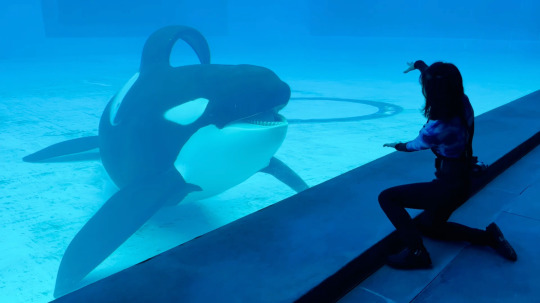
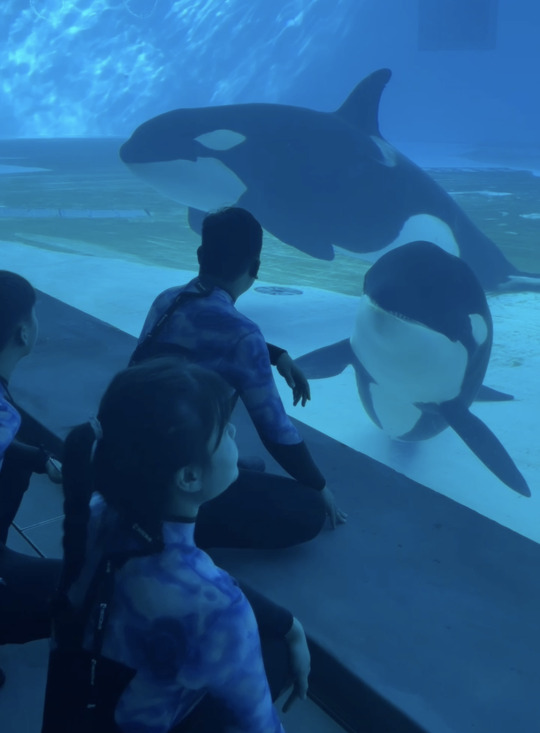
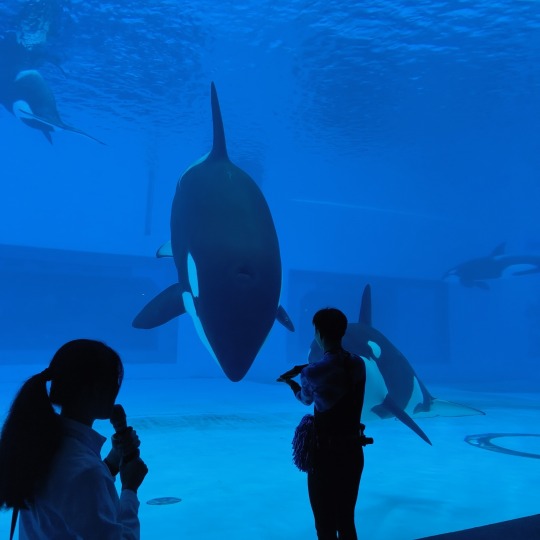

At Chimelong Spaceship, trainers/whales window interactions, combined with educational talks, take place at the main underwater viewing window.
19 notes
·
View notes
Text
The main underwater viewing window at Chimelong Spaceship’s killer whale exhibit
25 notes
·
View notes
Text
The wave machine is now testing at Chimelong Spaceship's upcoming killer whale exhibit.
28 notes
·
View notes
Text
Chimelong Spaceship’s orca exhibit is almost ready
12 notes
·
View notes